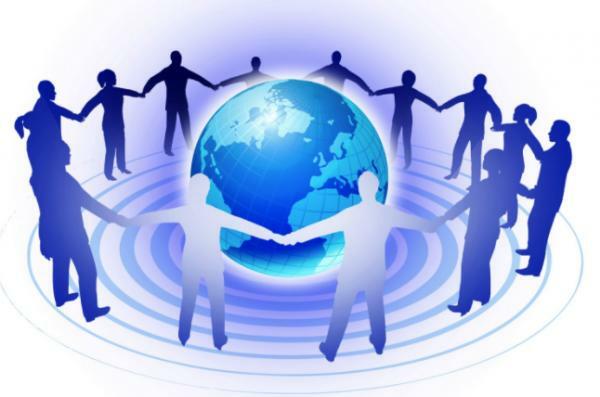
Social systems as a specific type of open systems they possess distinctive and differentiating properties. They do not have physical limits, an established physical structure like that of biological systems. Social systems have a structure but it is more of events and events than of physical parts and this is inseparable from their functioning.
Organizations are artificially devised systems and what holds their members together are psychological rather than biological ties. The organizations, open social systems, can be designed for a wide range of objectives and determine that their growth curves do not conform to the typical life cycle of the systemsbiological. They require a variety of control mechanisms that keep their parts together and function interdependently.
Index
- Social systems according to Katz and Kahn
- Social systems according to Miller
- Social systems according to Schein
- Limitations of the consideration of the organization as an open system
- The ecological effects of organizational action
- Conclution
Social systems according to Katz and Kahn.
Katz and Kahn point to a theoretical model for the understanding of organizations it is an energy input-output system. Social organizations are open systems in which the energy input and the conversion of the output into subsequent energy input consist of transactions between the organization and its environment.
All social systems They consist of scheduled activities of a certain number of individuals. These activities are complementary or interdependent with respect to some common output or result, they are constantly repeated and are limited in space and time. By emphasizing in the concept of organization the aspects related to the scheduled activities of a certain number of individuals, they place the concept of role in a relevant place. Conceptualize the organization as a system of roles.
Social systems according to Miller.
Miller highlights a complementary aspect to define organizations. It points out the importance of decision-making processes aimed at the transformation and processing of energy, matter and information. He defines organizations as "systems with multi-tiered decision-makers whose components or subcomponents of companies. The difference with respect to other social systems is that they always have 2 steps in their decisions, even if they are small.
Group decision-makers do not have rungs formallydesigned. A third characteristic is its constant relationship with the environment, exchanging matter, energy and information. An organization can be described as an open system that deals with its environment. In order to survive and prosper an organization must maintain a favorable input-output ratio. To the extent that a stable cycle of inputs-transformation-outputs can be maintained, procedures oftransformation more effective. The organization is a complex social formation. A system of roles, decision-making, with communication networks, with functional groups differentiated according to the task and coordinated with each other.
Social systems according to Schein.
Presents structural aspects and internal processes of operation. Their interaction with the environment, their need to exchange matter, energy and information with that environment and their integration as subsystem in broader social systems, highlights the need to consider the organization in its relations with the Exterior. Schein states:
- conceive the organization as an open system, which means that it is in constant interaction with its environment, receiving, transforming and exporting
- the organization can be conceived as a system of multiple purposes or functions that involve various interactions between the organization and the environment
- organizations consist of many subsystems that are in dynamic interaction with each other, it is important to analyze the behavior of these subsystems, we conceive them in terms of groups and roles or in terms of other concepts;
- subsystems are mutually dependent on each other, changes in one subsystem are likely to affect the behavior of others;
- the organization exists in a medium environmentdynamic consisting of other systems, some wider and some narrower
- The ties between the organization and its environment make it difficult to specify the boundaries of a given organization. better to formulate an organization concept in terms of stable import, conversion and export
Limitations of the consideration of the organization as an open system.
Organizations are systems located at the eighth level. However, the conceptual models formulated to understand them do not go beyond the fourth level. Organizations are social systems, however, theories have been formulated that have not gone beyond the characteristic notes of elementary open systems: ability to self-structure and relevance of interaction with the environment to maintain that ability. In the 1970s, an emphasis was placed on studying organizations in achieving coordination functional of its purposes, structure, technology and environment in the presence of a situation of uncertainty persistent.
Subsequently, some authors insist on the need to go further and consider organizations as social systems in all their complexity. Pondy Y Mitroff (1979) in their application to organizations address these social phenomena in all their complexity. They point out some limitations:
- forgetting the ecological effects of organizational action
- insufficient consideration of organizational dysfunctions
- blocking certain relevant issues by considering only mature organizations and starting from the norms of rationality and a partial and biased approximation of the higher cognitive abilities of their members.
The ecological effects of organizational action.
By considering organizations as open systems, they point out that they are influenced by their environment and that therefore they must take it into account and interact with it in the most positive way possible. Generally, instead, it has been assumed that the primary objective of this whole relationship was to neutralize the effects of the environment or try to control them, trying to reduce the uncertainty they produce and their variability. The organization, as a complex social system, needs an environment, a varied and differentiated ecological niche that allows it maintain its own complexity, since only one part of that environment is given to it, the other is produced or modeled by the organization. Weick (1969) points out that the organization does something and once its product or result is made, it becomes part of its own environment from which that same organization has to incorporate new inputs to maintain its structure and order internal. The The organization not only interacts with its environment but also contributes to its construction or destruction and can intervene in its "design".
Faced with a limited conception in the organizational theory of the organization-environment interaction, another alternative that insists on the need for the organization itself to contribute to the enrichment of its environment and not merely try to neutralize it or control it.
Conclution.
Organizations are multipurpose social systems, composed of many subsystems conceived in terms of groups, roles, communication or decision-making centerss, etc. They are formed and developed in an environment that encompasses other social systems and that imposes demands and restrictions on them. The organization is conceptualized as stable processes of import, conversion and export of matter, energy and information in an environmental environment.
This article is merely informative, in Psychology-Online we do not have the power to make a diagnosis or recommend a treatment. We invite you to go to a psychologist to treat your particular case.
If you want to read more articles similar to Organizations as social systems, we recommend that you enter our category of Social and Organizational Psychology.


